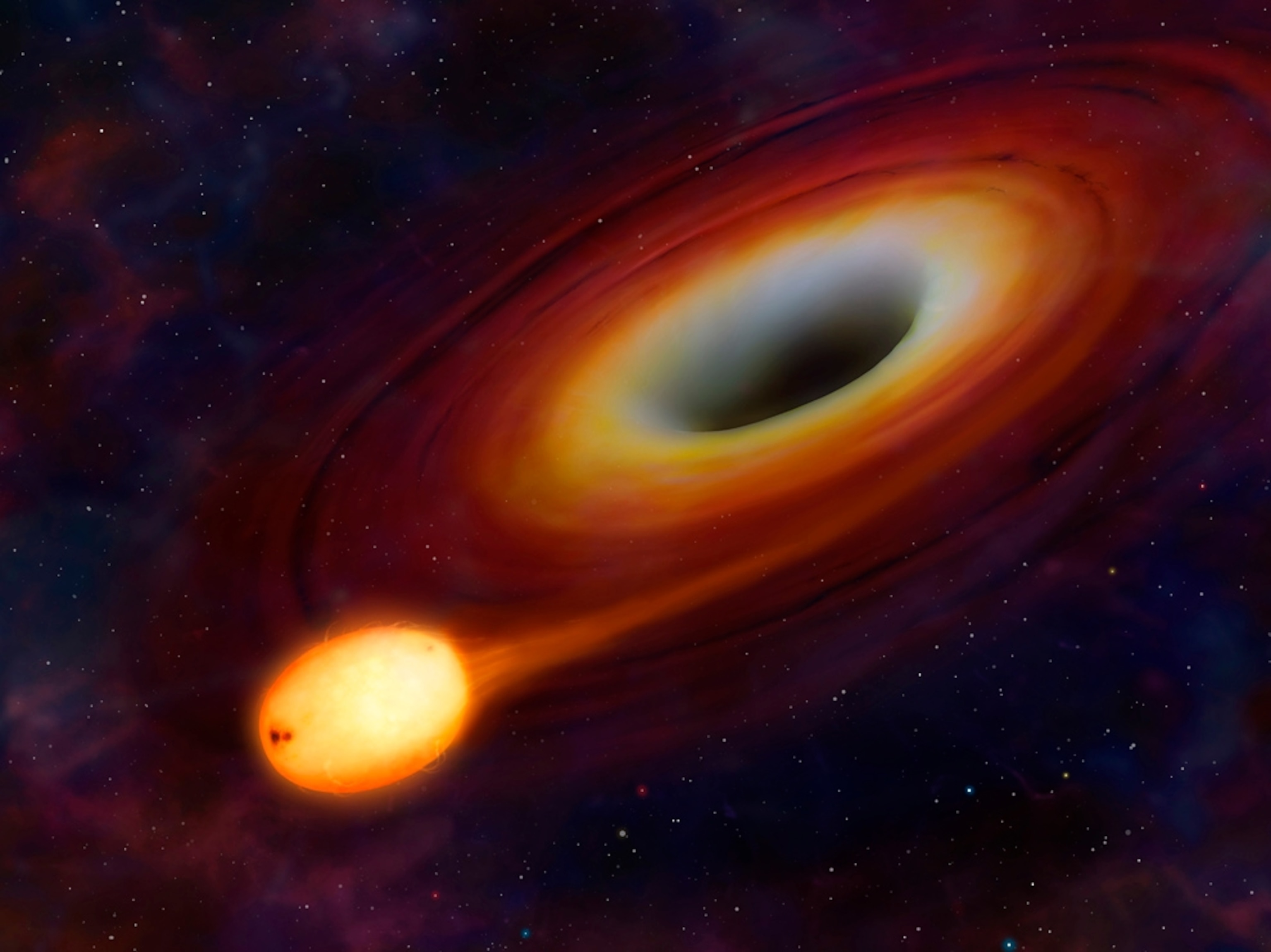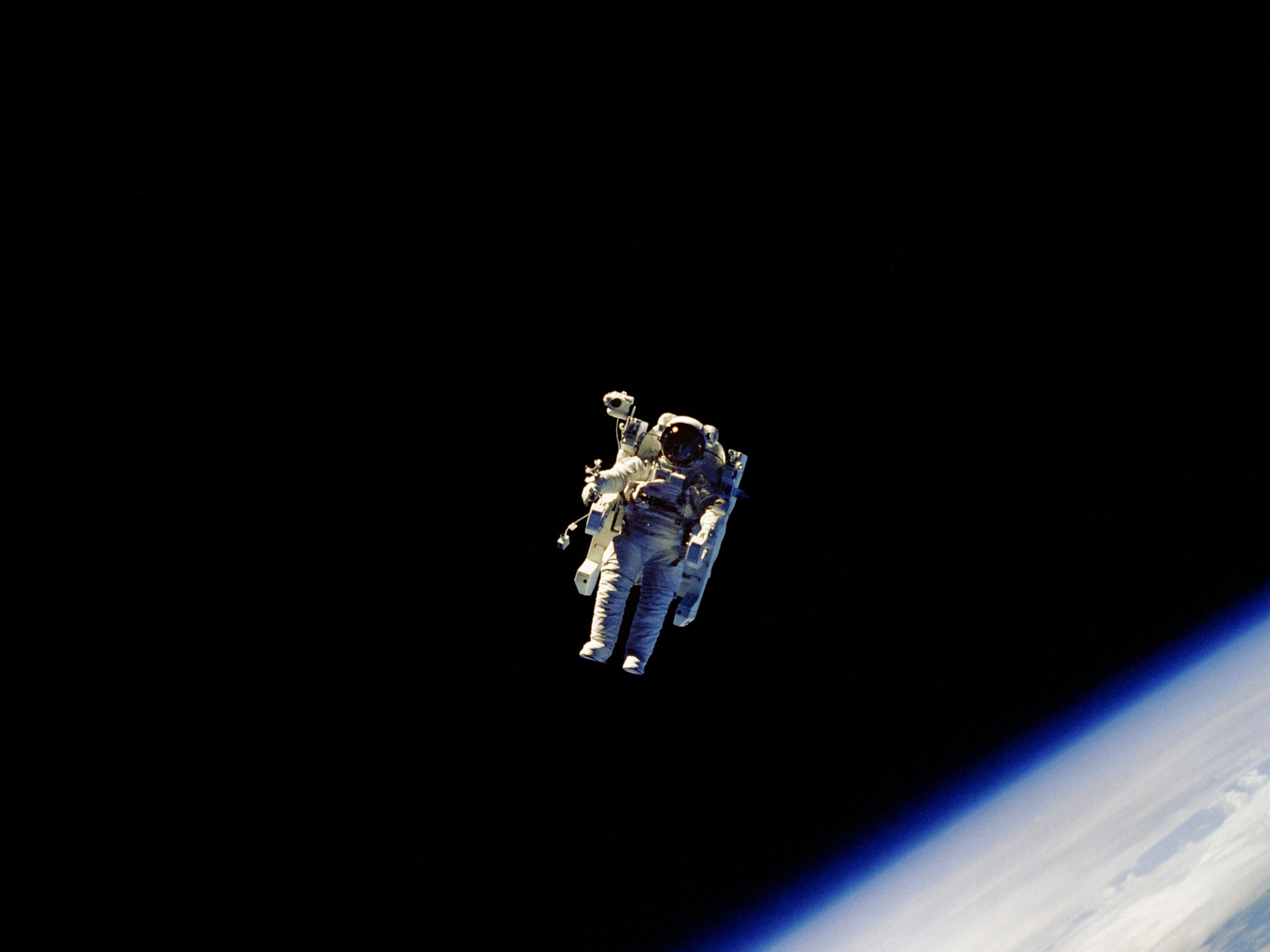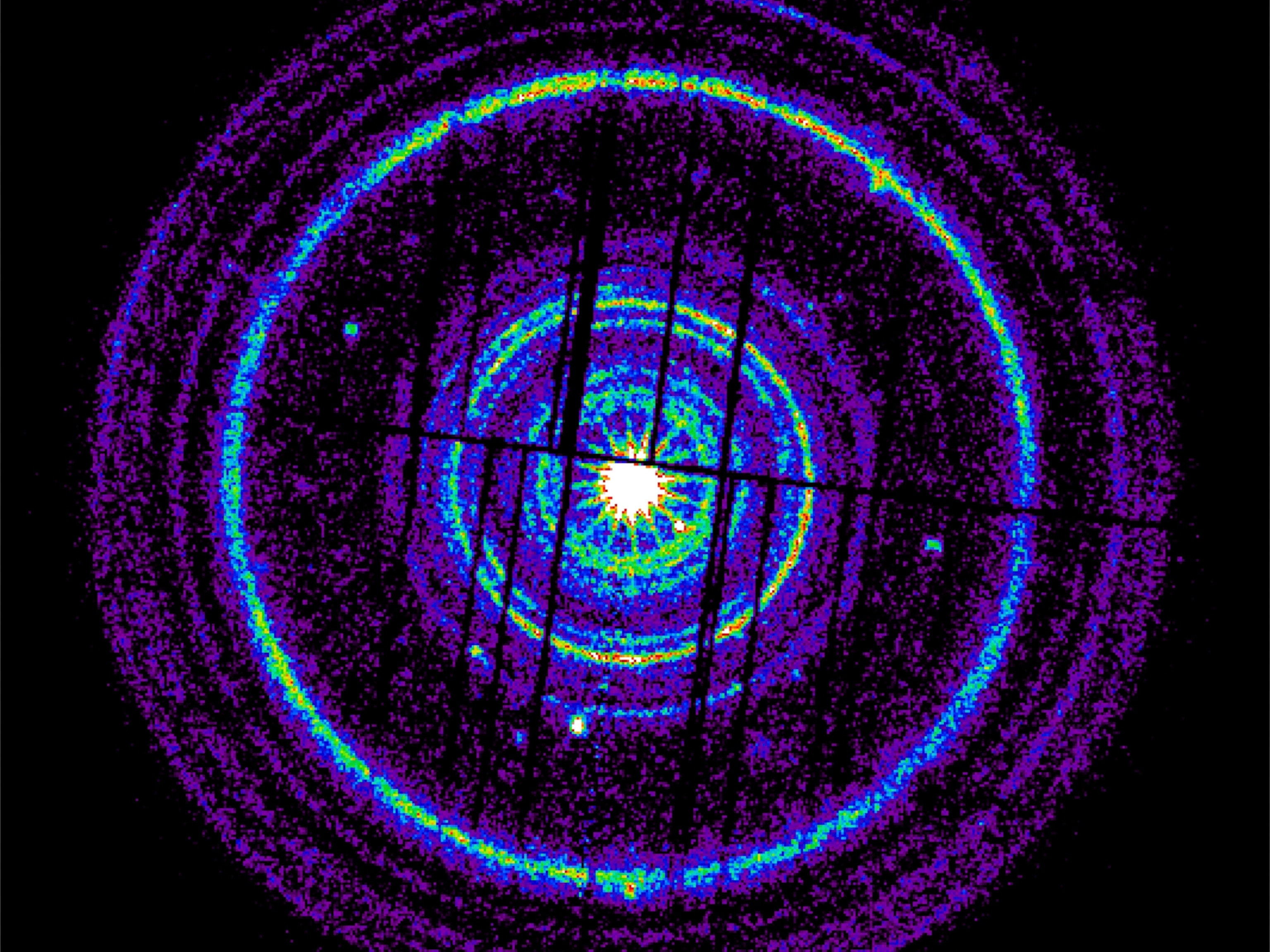
Black Hole Caught Eating a Star, Gamma-Ray Flash Hints
Long, bright burst from a distant galaxy likely a cosmic "belch."
A huge "belch" of radiation from a supermassive black hole indicates that the cosmic monster recently devoured a star, scientists say.
Earlier this year astronomers spied a burst of high-energy gamma rays emanating from the center of a dwarf galaxy 3.8 billion light-years away. The odd flash, dubbed Sw 1644+57, is one is the brightest and longest gamma ray bursts (GRBs) yet seen.
In visible light and infrared wavelengths, the burst is as bright as a hundred billion suns. (Related: "Ultrabright Gamma-ray Burst 'Blinded' NASA Telescope.")
"We believe this explosive event was caused by a supermassive black hole ten million times the mass of the sun shredding a star that got too close to its gravitational pull," said study leader Joshua Bloom, an astronomer at the University of California, Berkeley.
"The mass of the star fell into the black hole, but along the way it heated up and produced a burst of energy in the form of a powerful jet of radiation, [which] we were able to detect through space-based observatories."
(Related: "Giant Black Holes Found at Dawn of the Universe.")
While supermassive black holes are thought to be lurking at the hearts of most large galaxies, events such as a star getting eaten may happen only once every hundred million years in any given galaxy.
"What makes this event even more rare is that we didn't just get a burst of x-ray emissions from the infalling stellar gas, but some of it actually got spit out by the black hole in the form of a gamma ray jet, and we just happen to be looking down the barrel of that jet," Bloom said.
"So I would say it's a combination of actually catching a monster black hole in the process of feeding on an unfortunate star that got too close to it, and because we are in a fairly special geometry."
Star's Death Caused Uncommon Flare
NASA's Swift satellite first detected the burst on March 28, 2011, and both the Hubble Space Telescope and the Chandra X-ray Observatory followed the burst's progress.
The explosive event was initially thought to be an ordinary gamma ray burst. Originating billions of light-years away, these events are seen every few days across the universe, and they're thought to occur when very massive stars blow up or when two giant stars collide.
"Most of these [common gamma ray bursts] are detected and quickly fade away within the course of a day," Bloom said.
(Related: "Space-Time 'Wrinkles' Igniting Odd Gamma-ray Bursts?")
"But now after two and half months, this new GRB is still going strong. Because it stands out so much observationally, this decidedly makes it something different from any other GRB we have ever seen before."
In addition, common gamma ray bursts are normally spied off-center in the main bodies of galaxies. But Sw 1644+57 was found in an unusual location—at the core of a galaxy.
"That's the prime reason we started suspecting early on that a supermassive black hole was involved, because we know [galactic cores are] where these beasts reside."
Scientists already knew that actively feeding galactic black holes emit huge amounts of radiation, because material falling in gets superheated as it nears the black hole's maw. Sw 1644+57 is surprising, though, because of its spontaneous nature.
"What's amazing," Bloom said, "is that we have here an otherwise quiescent, starving black hole that has decided to go on a sudden feeding frenzy for a short period of time."
Our own Milky Way also has a quiet supermassive black hole at its center. The new discovery shows it's possible for our cosmic monster to spew powerful radiation jets should a star fall in, Bloom added.
Still, because such events are so rare—and the resulting jets are so narrowly focused—it's unlikely we'd detect anything like Sw 1644+57 shooting from our galaxy for millions of years.
The black hole eating a star is described in this week's issue of the journal Science.





